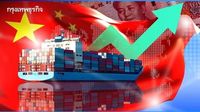On October 14, 2025, Australia’s rare earth mining sector experienced a remarkable surge, capturing the attention of investors and economic analysts worldwide. The sudden rally, which saw some stocks soar by double digits, comes on the heels of escalating tensions between China and the United States over the control and export of rare earth elements—critical components in everything from smartphones to missile guidance systems. As the U.S.-China trade war enters a new chapter, the global supply chain for these strategic minerals is under the microscope, with ripple effects felt from Sydney to Shanghai.
According to Investing.com, Lynas Rare Earths Ltd, the largest rare earths producer outside of China, saw its stock price climb 3.4% on Tuesday, outperforming the broader ASX 200 index, which remained largely flat. Other Australian mining companies posted even more dramatic gains: Iluka Resources Ltd shot up by 14.7%, Northern Minerals surged an eye-popping 43%, and Arafura Resources Ltd jumped 18.3%. These impressive numbers underscore how sensitive the rare earths market has become to geopolitical developments and policy shifts in Beijing and Washington.
Driving this market frenzy are China’s recent moves to tighten export controls on rare earths, a sector in which it is the undisputed global leader. Earlier in October, Beijing added several rare earth minerals to its list of controlled exports and expanded restrictions to include related production equipment. The Chinese government, through its Ministry of Commerce, has issued export licenses to domestic producers, but notably paused new licenses earlier this year when trade tensions with the U.S. were at their peak. While China resumed rare earth exports after a trade agreement was signed with the U.S. in May, the specter of renewed restrictions remains ever-present.
The stakes are high. Rare earth elements are indispensable in a wide array of applications, from consumer electronics to advanced defense hardware. As such, they have become both a bargaining chip and a potential flashpoint in the ongoing trade dispute. President Donald Trump’s recent threat to impose 100% tariffs on Chinese goods—specifically in response to China’s new export controls—has only heightened anxieties about global supply shortages. Although Beijing has dismissed Trump’s warnings, the mere suggestion of further restrictions has sent shockwaves through commodity markets.
China’s willingness to wield its dominance in rare earths as leverage is not new. The country has long used its position as the world’s primary exporter to influence negotiations and policy outcomes. As reported by Investing.com, Chinese officials and their American counterparts are currently engaged in operational-level talks in an attempt to de-escalate tensions. Yet, the Chinese Ministry of Commerce has made it clear that the country is prepared to "fight to the end" in the trade war if necessary. This uncompromising stance has only added fuel to the fire, prompting many Western governments and companies to seek alternative suppliers and reduce their reliance on Chinese materials.
Meanwhile, China’s export performance is showing resilience in the face of U.S. tariffs. According to Bangkok Biz News, Chinese exports in September grew by 8.3% year-on-year, reaching $328.6 billion—a pace not seen in six months and well above economists’ forecasts. This robust growth has helped ease some of the domestic economic pressures Beijing faces, especially as its property sector continues to struggle and the country grapples with deflationary headwinds.
Interestingly, while exports to the U.S. have declined for the sixth consecutive month—down 27% in September—China has more than compensated by ramping up sales to other regions. Exports to Africa soared by 56%, the fastest rate in four years. Latin America saw a 15.2% rebound, and shipments to the European Union jumped by over 14%, marking the strongest growth in more than three years. Southeast Asia, too, posted nearly 16% growth, with Vietnam emerging as a key partner. Exports to Vietnam surged almost 25%, prompting analysts at Capital Economics to dub the country the "number one rerouting hub," as Chinese firms increasingly use third countries to circumvent U.S. tariffs.
Michelle Lam, an economist at Societe Generale SA, told Bangkok Biz News, "China’s exports remain strong despite U.S. import tariffs because of its diversified export markets and strong competitiveness." She added, "The limited impact of U.S. import tariffs on overall trade so far is likely to embolden China to adopt a tougher stance in trade negotiations with the U.S." This sentiment is echoed by other experts who note that robust demand from markets outside the U.S. is cushioning Chinese companies from the full brunt of American tariff threats.
The broader economic context is equally important. China is set to release its third-quarter GDP figures on October 20, 2025. While most analysts anticipate a slowdown in the second half of the year, strong GDP growth in the first two quarters has kept the country on track to meet its official growth target of around 5%. Higher export revenues, especially from non-U.S. markets, are providing a much-needed boost to the domestic economy at a challenging time.
In response to China’s tightening grip on rare earth exports, the Trump administration has reportedly stepped up efforts to invest in non-Chinese producers, including several Australian companies. The goal is clear: to reduce U.S. dependence on Chinese materials and ensure a stable supply of critical minerals. This strategy is already bearing fruit, as evidenced by the sharp gains in Australian rare earth stocks.
Even Chinese rare earth stocks have seen significant upticks following Beijing’s new export controls, though some profit-taking and market consolidation were observed on Tuesday. The volatility reflects both the uncertainty of future policy moves and the high stakes involved for all parties.
As the world watches, the rare earths market has become a bellwether for broader geopolitical tensions. With both sides digging in—China signaling its readiness to "fight to the end" and the U.S. threatening steep tariffs—investors and policymakers alike are bracing for further turbulence. The outcome will not only shape the future of the global technology and defense industries but could also redefine economic alliances and supply chains for years to come.
For now, the rare earths rally serves as a stark reminder of just how interconnected—and fragile—the global economy has become. Every move in Beijing or Washington sends ripples across continents, reshaping markets and rewriting the rules of international trade.

